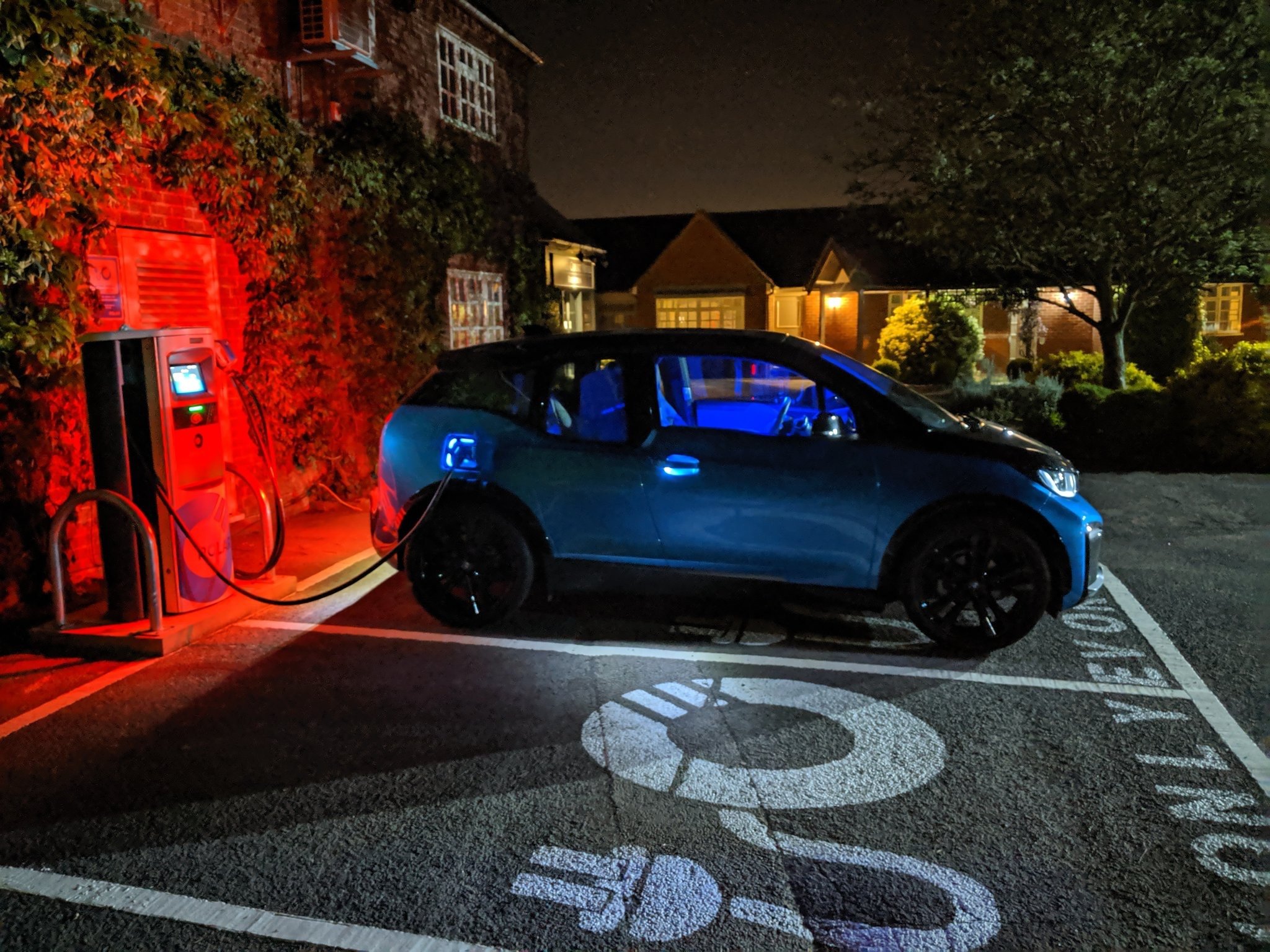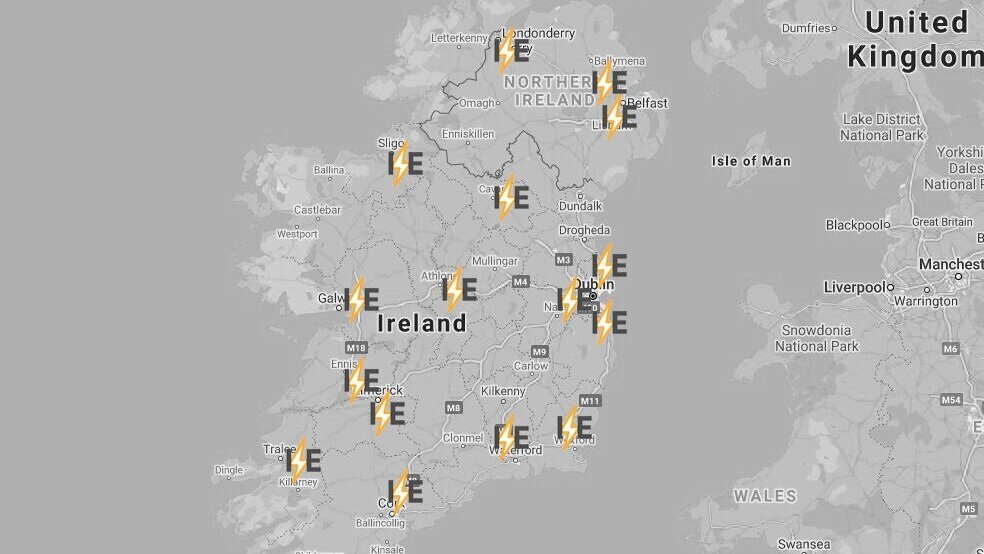
Give Me Shelter:
Safety & Security At EV Charging Points
Ireland is still some distance behind other European nations in electric car adoption, and as a result our electric charging network is still in its infancy – even if we have more than 1,385 public charging points already available across our small nation.
As a result we have the opportunity to take pause and consider the kind of network that we want to see being built in the coming years. We have previously discussed the number of rapid chargers Ireland needs, and the shameful issues around the lack of accessibility for drivers and passengers with disabilities – including the fact that just four chargers are currently wheelchair accessible.
Today we’re looking at the issue of personal safety and security – particularly for female EV drivers – and why the Irish government needs to implement basic standards to aid use, and how this ties into issues of gender equality across society.
Safety & Security
Shortly after leading an excellent ‘beginners guide’ series for Fully Charged (which we would highly recommend for anyone considering getting their first EV), presenter Maddie Moate raised concerns about personal safety for female EV drivers.
Speaking on Twitter in August 2020, she flagged her concerns about a lack of lighting and the positioning of public EV chargers, which tie into broader issues of safety for women in society:
“I’ve been pondering why I felt so stressed about struggling to find an #EV charger last night. I had 30 miles left and this morning I was able to solve the problem pretty quickly. Then it hit me. It was dark, past 10pm, I was alone in a car park and I was scared.”
“I’m fed up of charging in pitch black car parks when I’m by myself (often on the phone to get a machine restarted). I’ve realised one of the reasons I feel vulnerable is because I’m a solo woman hanging about in the dark, in a situation where I can’t necessarily drive away.”
Maddie Moate publicly addressed this issue in August 2020, following her switch to EV ownership. Credit: Twitter/Maddie Moate
“Obviously this isn’t the case for ALL charge points and this only happens when I’m on the road, but so many of them are tucked away in car parks, behind pubs, at business centres etc. Places I would never go by myself at night.
“Why are these public charge points not installed with lights? It would instantly make them feel safer and less intimidating. Am I alone or do other women (or anyone) feel the same?”
A Prevalent Issue
Maddie Moate is not alone in her concerns over personal safety at EV charging points.
Over recent days we have spoken to a number of female EV drivers about their experiences and their concerns about personal safety and security at public EV charging points, with many of them highlighting the same issues.
“I don’t think women’s safety has been taken into account at all when planning charge points”
“In Limerick city, the public charge points are in quieter area just outside the city centre or on small side streets. I have no problem using these during the day, but I would not use them at night if I were alone, unless it were urgent. Not only are they in quiet areas, but they require me to walk extra distances at night alone,” commented Anna Creegan.
She continued: “I have noticed that charge points in hotels or company car parks tend to be at the edges, away from the building and main lighting. These are parking spaces I would normally avoid, especially at night. One company I visited had the charge points by the front door, just past the disabled parking bays, and I definitely felt safer.”
Isolated public chargers in poorly lit areas are a major source of concern for the female EV drivers we spoke to. Credit: EV Clicks
“I don’t think women’s safety has been taken into account at all when planning charge points and more could certainly be done, such as charge points on main streets instead of side streets, and put closer to main entrances. At service stations, charge points should be closer to the main building with good lighting and a canopy so users are offered protection from the elements – just as petrol car users are given”.
Anna’s sentiments were shared by many others who responded to our call for comment.
Among them was Kate Tyrrell: “I absolutely believe the location, lighting and security adversely affects female drivers, and I have had to abandon chargers that I felt were too risky to use in order to find a safer one further away, at risk of running out of battery en route. I’ve had experiences that have scared me to the point of crying hysterically, and that’s not ok.”
“I believe that safety and accessibility should be improved for everyone. There’s much work to be done retrospectively to existing units and to ensure future installations meet a certain standard.”
“Better lighting, locations that are nearby to human activity, and security cameras are a minimum that we should expect of public chargers. Ensuring the units are well maintained and functional also has an impact – with access to a 24 hour support line in case there’s an issue.”
The latter is a major issue in Ireland, where there is a considerable lack of transparency around the maintenance of charging infrastructure. Using apps like Zap-Map and Plugshare, it is not uncommon to see issues persisting for months on end, without any transparency on when they will be fixed from the operator.
In the context of day-to-day use this is at least frustrating, but in the context of personal safety, this is a much graver concern.
Women’s Public Safety In Ireland
Public EV chargers are reflective of broader issues of safety and security in society.
A study by Trinity College Dublin and Maynooth University in 2020 reported that 49% of Irish women had been sexually assaulted or harassed. These figures mirror the landmark Sexual Assault and Violence in Ireland report, which was released in 2002.
This is the context in which we should understand concerns around the personal safety of female EV drivers and public transport users. Women are disproportionately impacted by sexual harassment and invasions of personal safety, and these are real-world, everyday concerns that must be listened to and addressed.
Public transport stops and public EV charging infrastructure share common issues around personal safety fears - especially around lighting and reporting. This image is a clear indication of the former. Credit: William Murphy
Earlier this year, Transport Infrastructure Ireland (TII) reported that more than half of Irish women avoid public transport after dark, while a third of those surveyed agreed that ‘feelings of insecurity’ had prevented them from travelling on public transport entirely.
The TII report highlighted a need for better quality lighting around public transport stops, effective incident reporting, women’s safety audits and school education for boys and girls as key policy opportunities to overcome fears around safety.
The same study found that women rely heavily on car use as a result – which drives home the need for improved safety and security infrastructure at public EV charging points, adopting many of the same recommendations shared above.
It also highlights the need for inclusive design in the face of the Climate Crisis, as the report goes on to state that women see safety as a major obstacle to increase use of bicycles.
While EVs may be greener than their fossil fuel-powered counterparts, there is no denying that their sustainability pales in comparison to public transport and active travel – so addressing issues of gender inequality is paramount in reducing emissions from transport in the coming years.
Facilities such as the Gridserve hub in Essex, UK, understand the importance of well-lit, sheltered charging. Simple solutions can have a big impact on personal safety fears. Credit: EV Clicks
A Way Forward
Although it is true that the vast majority of EV charging has always – and will always – take place at home due to convenience, lower costs, and lower carbon intensity, we must have a safe and accessible public charging network that caters to everyone’s needs.
It is rare to come across well-lit chargers that are close to public facilities (such as service stations), and not located at the far-end of a car park as an afterthought.
In fact, it can sometimes be hard just to find where the charger is, as they are so often out of the way and in the furthest, darkest corner.
It would not be hard to implement policy to ensure that public EV chargers offered ample lighting as well as shelter from the elements – something that is very rare at EV chargers, and which impacts all users but arguably has a greater impact on users with disabilities.
It would be more than feasible to fit such canopies with solar cells to generate energy to power the additional lighting.
Alongside this, we should have a public consultation with EV owners about the need for greater transparency around reporting issues, and how the implementation of security systems could improve fears around safety.
These are simple and easy fixes that should be considered when new public EV charging facilities are being installed in order to make them inclusive.
Based on the feedback that we have received, we will be following up with the Department of Transport and ESB to find out more about how they are addressing issues of safety and accessibility – both for new chargers and those already in place.
Our great thanks to all the female EV drivers we spoke to and who shared their experiences so honestly.
What To Read Next
How Many EV Chargers Does Ireland Need?
We assess how many EV chargers Ireland actually needs, and why we should focus our investment on future-proofing the charging infrastructure, rather than just focusing on increasing the volume of those available
EV Charging Accessibility: How Ireland Is Failing Disabled Drivers
It is clear that users with disabilities have been little more than an afterthought when it comes to EV charging accessibility - something that must change






